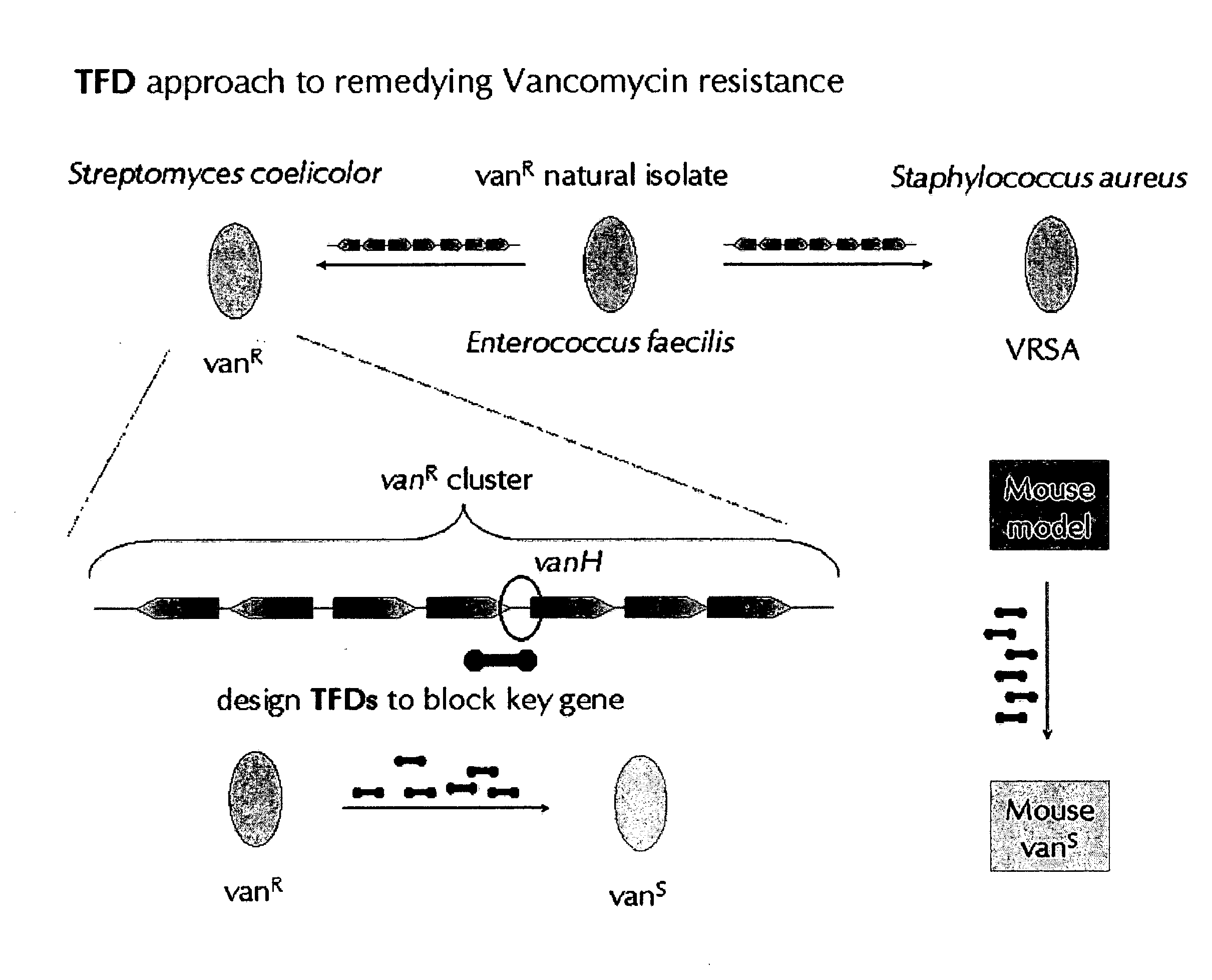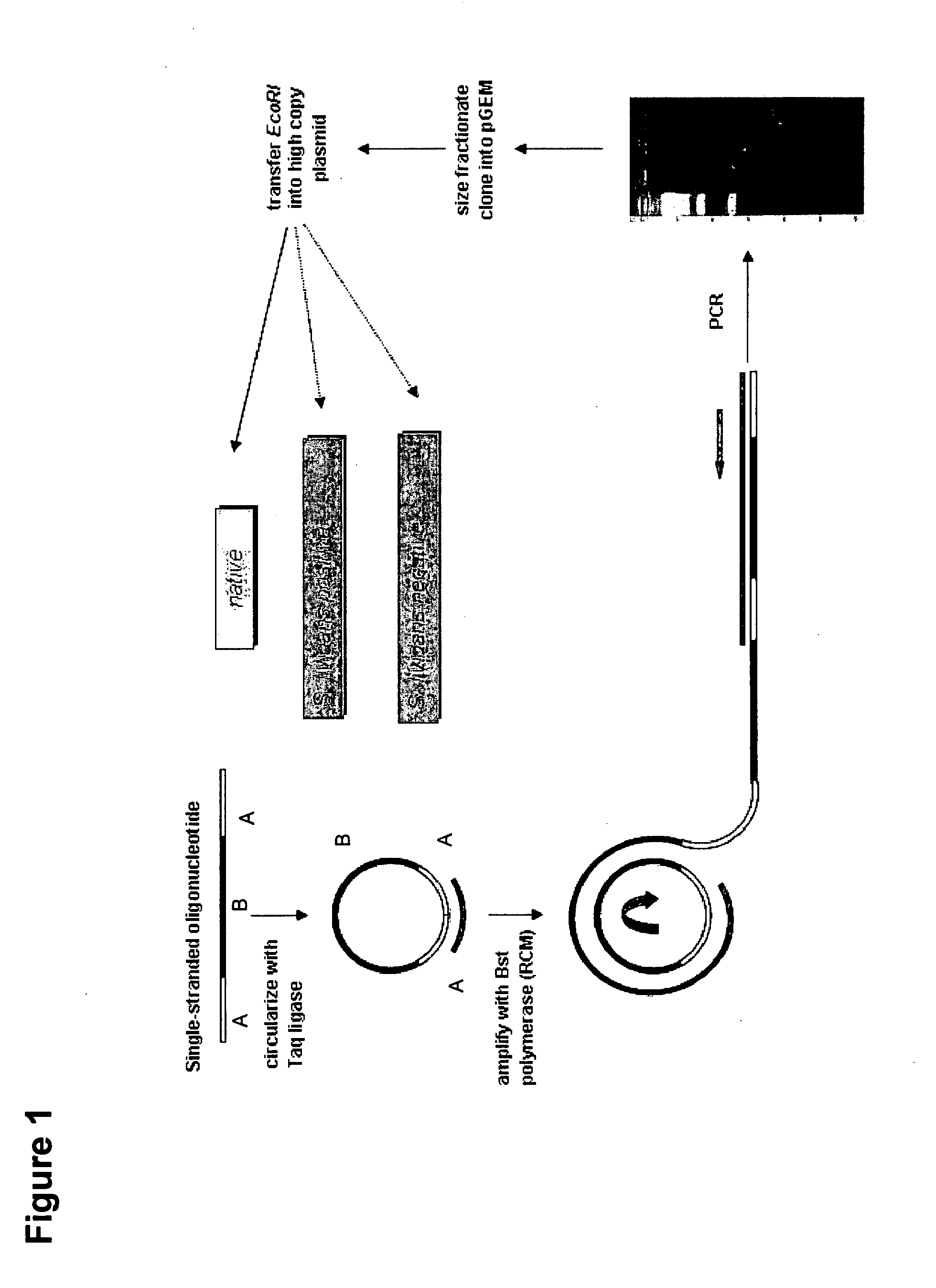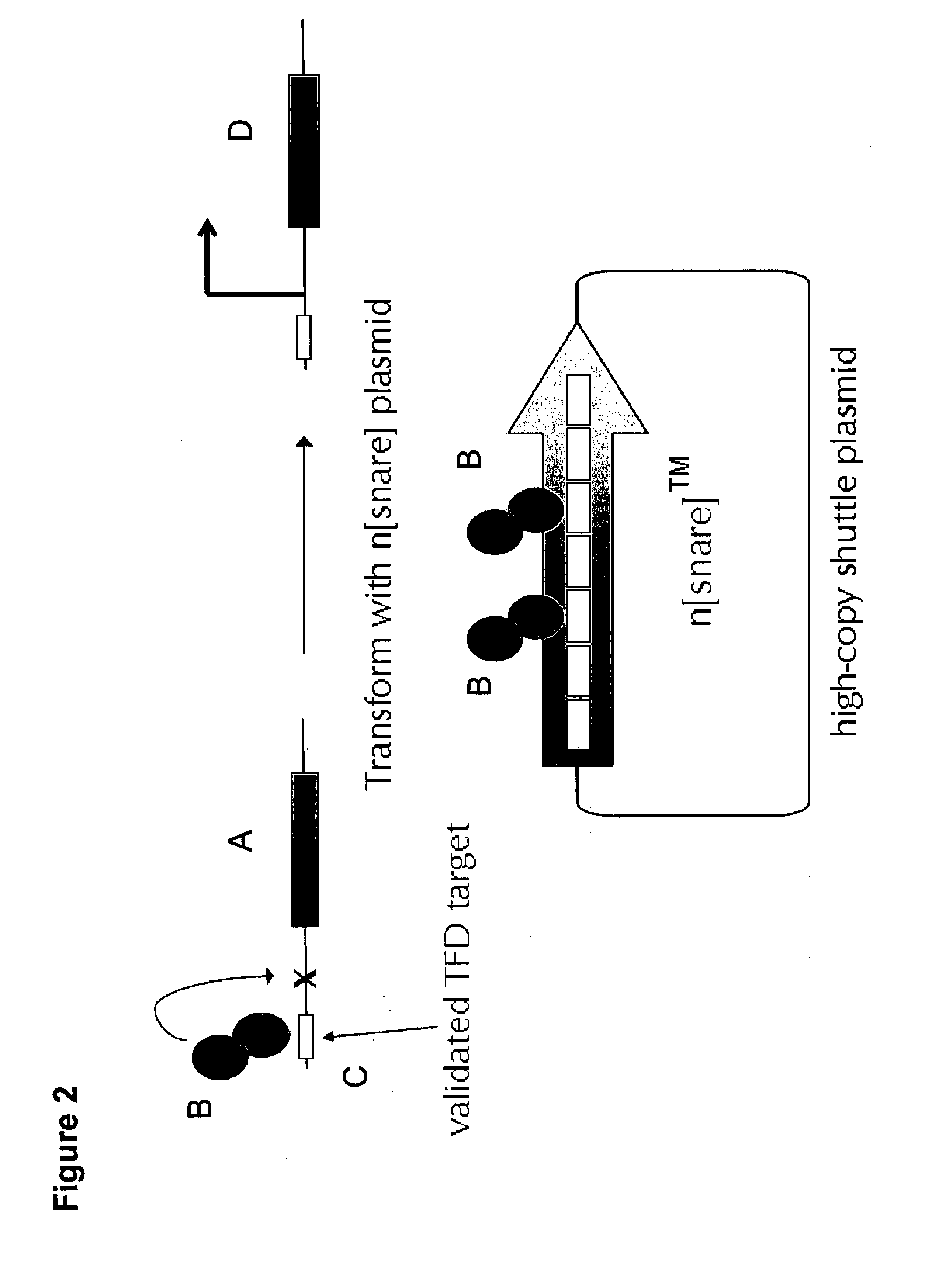Transcription factor decoys, compositions and methods
- Summary
- Abstract
- Description
- Claims
- Application Information
AI Technical Summary
Benefits of technology
Problems solved by technology
Method used
Image
Examples
example 1
Demonstrating the Creation of Plasmid-Borne Versions of Decoy Oligonucleotides and their Utility in Modifying Phenotypes
[0450]To achieve this work, it was first necessary to develop a molecular biology protocol capable of creating an n[snare] plasmid. A desired feature of such a plasmid vector is that it should contain a section consisting of direct copies of the same fragment of DNA. Usually these copies number 30, but may range in number from one to a thousand, and the length of the repeated sequence is in the range of 35-54 bp, but can be longer, e.g., up to 1000 bp. In the example of construction given below, within this repeated sequence, there is a segment (27 bp) which is common to all n[snare] plasmids and is a consequence of the method of manufacture. Also in this example the plasmid vector was chosen: (i) to allow transformation and propagation of E. coli and S. coelicolor; (ii) to contain a selectable marker gene encoding resistance to the antibiotic apramycin; and (iii) ...
example 2
A Method for Identifying Cis-Regulatory Elements and, Therefore, Decoys for Modifying Phenotype in Prokaryotes or Eukaryotes, Using n[snare] Libraries
[0462]In this example the n[snare] library is made from short DNA fragments isolated from the 17.083 kb cinnamycin biosynthetic cluster (Widdick and Bibb (2003) Proc. Natl. Acad. Sci. USA 100: 4316-4321), and the library reintroduced into the producing strain of Streptomyces cinnamoneus. Detection of the antibiotic is performed using a plate assay where colonies of the producing strain are allowed to grow on an agar plate which is overlaid with a soft nutrient agar seeded with an innoculum of the reporter strain Bacillus subtilis. A halo of clear nutrient agar appears around the producer colonies where the antibiotic has killed the indicator strain where elsewhere the nutrient agar appears turbid due to the strain's continuing growth. The diameter of the halo is an indicator of the amount of cinnamycin produced and, following introduct...
example 3
A Method for Using n[snare] Libraries to Identify Cis-Regulatory Elements and, Therefore, Decoys, for Modifying Phenotype Using Engineered Reporter Systems
[0470]1. Identifying Regulators of Cinnamycin Production with n[snare] Libraries and Cin7-Reporter Strains
[0471]The cinnamycin biosynthetic cluster has been previously described (Widdick and Bibb (2003) Proc. Natl. Acad. Sci. USA 100: 4316-4321) and the role of some of the identified genes confirmed by bioinformatical and genetic analysis. The cin7 gene is known to be preceded by the promoter that controls transcription of the cinMXTH operon that encodes the short protein (cinA) that is converted enzymatically to give the cinnamycin antibiotic (Sean O'Rourke and Mervyn Bibb, unpublished data). We created a reporter system driven by the cin7 promoter and introduced this construct into a Streptomyces lividans strain carrying the entire cinnamycin biosynthetic pathway (strain 1326). In order to demonstrate the approach, the cinnamyci...
PUM
| Property | Measurement | Unit |
|---|---|---|
| Electrical resistance | aaaaa | aaaaa |
Abstract
Description
Claims
Application Information
 Login to View More
Login to View More - R&D
- Intellectual Property
- Life Sciences
- Materials
- Tech Scout
- Unparalleled Data Quality
- Higher Quality Content
- 60% Fewer Hallucinations
Browse by: Latest US Patents, China's latest patents, Technical Efficacy Thesaurus, Application Domain, Technology Topic, Popular Technical Reports.
© 2025 PatSnap. All rights reserved.Legal|Privacy policy|Modern Slavery Act Transparency Statement|Sitemap|About US| Contact US: help@patsnap.com



